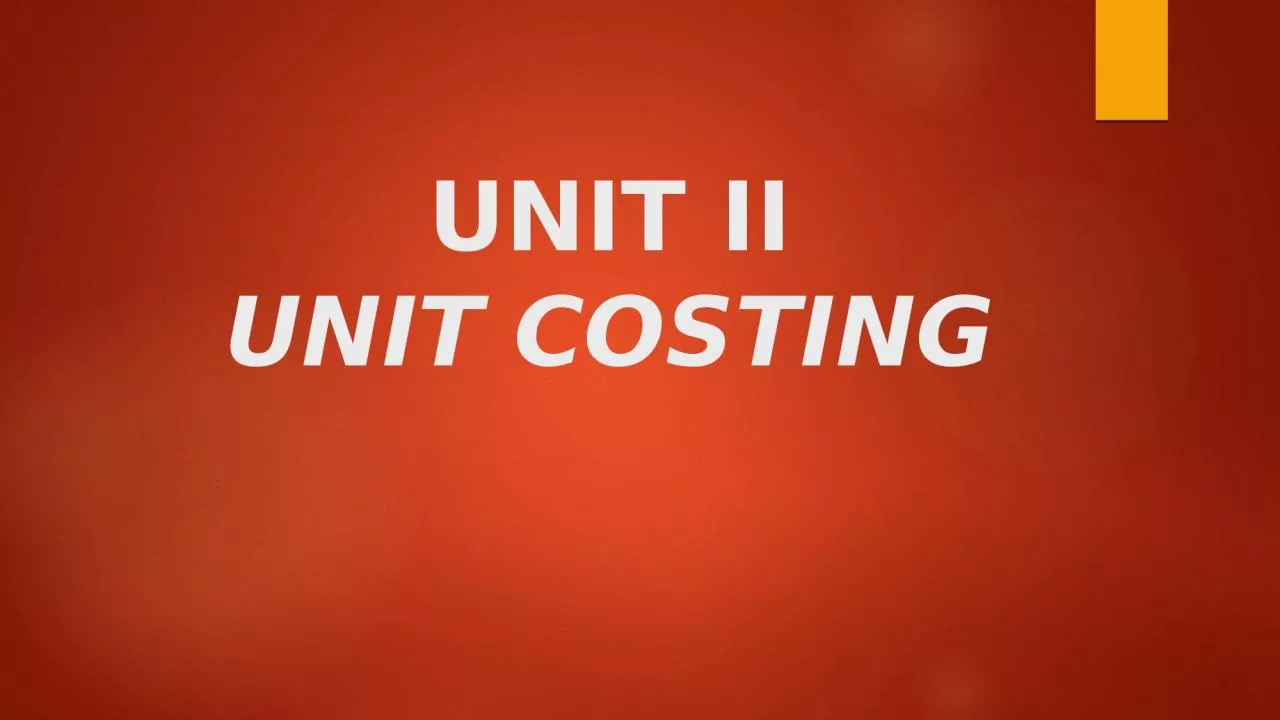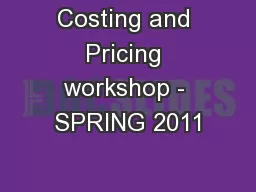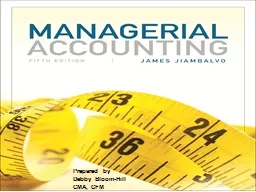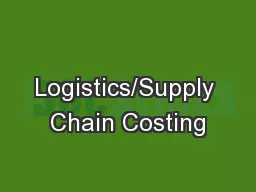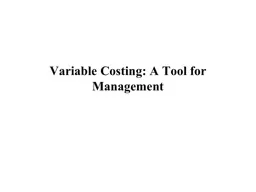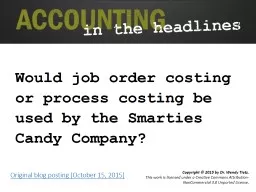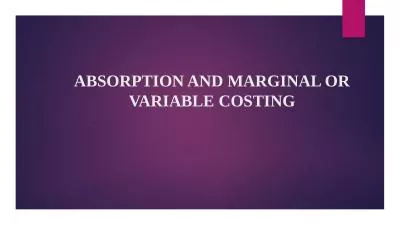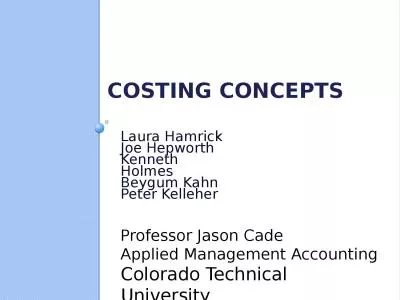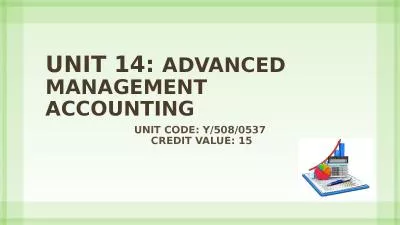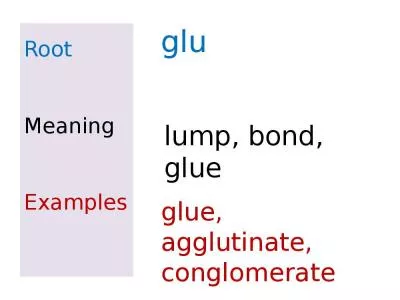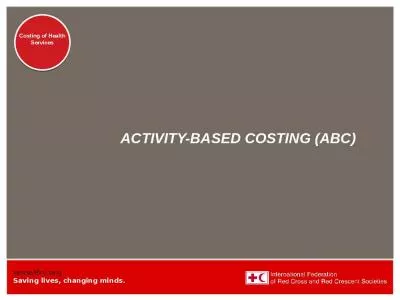PPT-UNIT II UNIT COSTING Meaning of unit costing
Author : sophie | Published Date : 2023-11-05
Unit costing is a method of costing based on units of production It is also known as output or single costing The o utput is measured in convenient physical units
Presentation Embed Code
Download Presentation
Download Presentation The PPT/PDF document "UNIT II UNIT COSTING Meaning of unit c..." is the property of its rightful owner. Permission is granted to download and print the materials on this website for personal, non-commercial use only, and to display it on your personal computer provided you do not modify the materials and that you retain all copyright notices contained in the materials. By downloading content from our website, you accept the terms of this agreement.
UNIT II UNIT COSTING Meaning of unit costing: Transcript
Download Rules Of Document
"UNIT II UNIT COSTING Meaning of unit costing"The content belongs to its owner. You may download and print it for personal use, without modification, and keep all copyright notices. By downloading, you agree to these terms.
Related Documents

